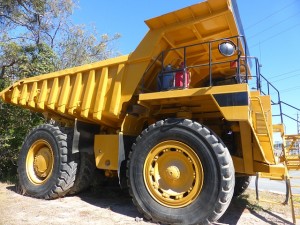 Print a Sign-In Sheet | Spanish Version
Print a Sign-In Sheet | Spanish Version
Performing maintenance under the raised bed of a dump truck can present hazards for employees.
Common causes for sudden movement of dump beds include: accidental control operation, inadvertent pulling of a release cable, hydraulic failure, and premature re-connection of an airline.
Remember:
- Develop a Lock out/ Tag out program that illustrates the procedure for securing elevated truck beds. **KEMI strongly recommends having an effective LOTO policy for employees who perform maintenance on dump trucks. Many consider LOTO as only an industrial application which simply isn’t the case. LOTO pertains to all forms of hazardous energy which include that of a raised dump truck bed.
- Ensure that raised beds are adequately supported to prevent any unexpected movement while being serviced. Use additional support, if necessary.
- Train employees regarding the proper use of body props, cribbing and wood blocks and the hazards associated with working on raised truck beds.
- Many trucks are equipped by the manufacturer with body props designed to help support the bed when raised. However, body props are commonly misused, when raised upright without additional support, or not used at all. Often, mechanics need to access the far rear of the truck and the bed is raised to a higher position than can be supported by the manufacturer’s prop. In these instances, additional cribbing or support is necessary. However, if not done properly, these methods can be ineffective and pose a danger as well
- You may wish to contact the truck’s manufacturer to see if alternate body props are available or to discuss other suitable methods of support.
- Make sure employees follow proper procedures and take necessary precautions when working beneath the elevated bed of a dump truck. Personnel need to ensure that, before making inspections, adjustments, or repairs under dump beds, adequate supports are used to keep the bed from moving.
KEMI does not assume liability for the content of information contained herein. Safety and health remain your responsibility. This information is to be used for informational purposes only and not intended to be exhaustive or a substitute for proper training, supervision or manufacturers’ instructions/recommendations. KEMI, by publication of this information, does not assume liability for damage or injury arising from reliance upon it. Compliance with this information is not a guarantee or warranty that you will be in conformity with any laws or regulations nor does it ensure the absolute safety of any person, place or object, including, but not limited to, you, your occupation, employees, customers or place of business.

